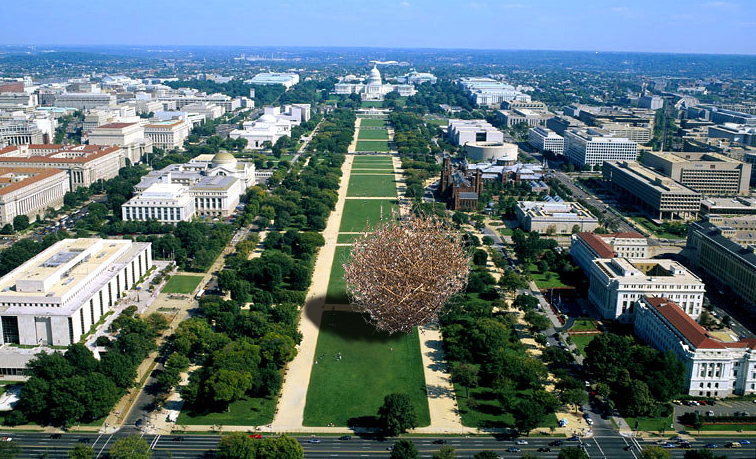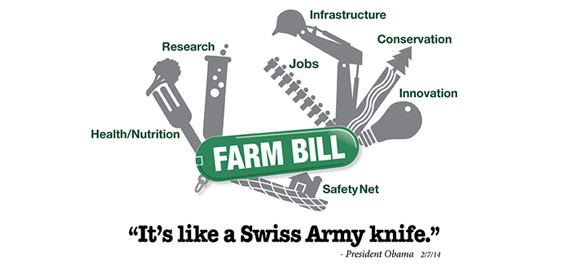What’s Next for Farm Bill Programs?
Author: Kate Fitzgerald
Calm reigns in the House and Senate Agriculture Committees, and it’s now the civil servants who are harried and sleep deprived as the tumbleweed of activity rolls down Capitol Hill to the Department of Agriculture headquarters on the National Mall.

For the past three years your correspondent has been reporting on the Farm Bill legislative process: now it’s time to focus on the implementation of the new programs and policies.
Over the next several weeks, we will explain the USDA process for new programs and provide an overview of Farm Bill provisions that might be of interest to readers of this blog.
When the President signed the Agricultural Act of 2014 on February 7, he passed responsibility for interpreting and implementing the policies to Secretary of Agriculture Vilsack. (In a bit of black humor, the Secretary noted that while it took Congress more than three years to write the bill, his department has only 90 days to act on some of its mandates!)
Government decision-making can seem opaque and arbitrary, but at USDA there is a method to the madness.
USDA is divided into “mission areas” responsible for the different constituencies the Department serves. For example, the programs created in the Nutrition Title of the Farm Bill are the responsibility of the Food and Consumer Services (FCS) area, while farm loans (in the Credit Title) are run by the Farm Services Agency (FSA). Each mission area figures out what the various provisions will require and creates a priority list and work plan to address them. Department leadership and agencies create a department-wide priority list and schedule for establishing new programs.
The Farm Bill language provides some direction to USDA but usually does not include detailed instructions on program design. That leaves a lot of leeway to personnel, who are guided by input from stakeholder groups, advice from the department’s legal office, and the constraints of their budgets and agency capacity. USDA is now holding formal and informal “listening sessions” to figure out how best to meet program goals.
The Food Insecurity Nutrition Incentive Case
Fair Food Network’s Farm Bill priority was the creation of the new Food Insecurity Nutrition Incentive grant program (FINI). This is a completely new program, so we can use it as an example of the USDA process over the next months.
The FINI program, which has broad bi-partisan support in both the Senate and House of Representatives and is one of Secretary Vilsack’s priorities is one of the lucky programs at the front of the implementation line. USDA staff is now meeting with stakeholder groups weighing in with advice on a host of issues, including whether the program should:
- Concentrate on direct markets or grocery stores?
- Be limited to the purchase of fresh produce?
- Focus on locally and regionally grown produce?
- Provide multi-year grants?
- Offer additional help to under-resourced communities?
- Test new technologies for SNAP and incentive redemptions?
USDA will take the input into consideration and draft a Request for Proposals (or Request for Applications) in the next several months. This will have to be approved by USDA’s legal department and then must be sent to the Office of Management and Budget (OMB) to ensure that it properly reflects the intent of the legislation and conforms to the Administration’s goals.
Once approved by OMB, the RFP returns to USDA and is published in the Federal Register. Once it is announced in the Register, applicants usually have about 60 days to submit their proposals, and then USDA takes at least another 60 days to review and score them. Funding recommendations are sent up the USDA chain of command for approval – which one hopes won’t take too long – and funding awards are announced.
All this takes time, which means that there probably will not be federal FINI funding flowing to communities for programs such as Double Up Food Bucks in 2014. Our hope is that a Request for Proposal will be published this year, in time for grants to be made to support SNAP fruit and vegetable incentive programs in the 2015 produce season.
Stay tuned and we’ll keep you informed.








